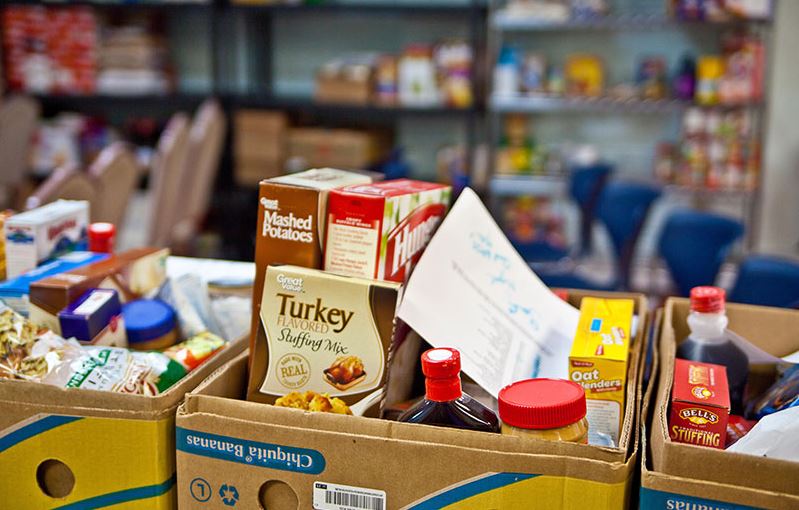What’s the Difference Between Food Pantry and Food Bank
What is a Food Pantry: A food pantry is a place where individuals or families in need can go to receive free or low-cost food items. These pantries are typically run by non-profit organizations, religious groups, or government agencies, and they may serve specific populations such as low-income families or veterans. Food pantries often rely on donations from individuals, grocery stores, and food banks to stock their shelves. The food items may vary from fresh produce, canned goods, dry goods, and non-perishable items.
Difference Between Food Pantry and Food Bank
A food pantry is a local organization that provides food assistance to people in need. They typically distribute food directly to individuals and families, and may be run by churches, charities, or other community groups.
A food bank, on the other hand, is a centralized organization that collects and distributes food to a network of local pantries, soup kitchens, shelters, and other organizations that serve people in need. Food banks often acquire food from grocery stores, farmers, manufacturers, and government programs, and then distribute it to their network of partner organizations.
See also: Tips for Visiting a Food Pantry
In summary, food pantries are the places where the people in need go to directly to get food assistance and food banks are the central organization that collect, store and distribute the food to food pantries and other organizations.
What are the most needed food pantry items?
The most needed items at a food pantry are typically non-perishable, nutritious, and easy-to-prepare items such as:
- Canned fruits and vegetables
- Canned meats (tuna, chicken, etc.)
- Peanut butter
- Dry or canned beans
- Rice
- Pasta
- Cereal
- Shelf-stable milk
- Juice
- Soup
- Cooking oil
It’s also important to consider cultural and dietary needs when donating to a food pantry. Some examples of this are halal meat, gluten-free products, or baby food.
See also: Most Pupular Hawaiian Food Restaurants in USA
It’s always best to check with your local food pantry to see what specific items are most needed.
How Do Food Banks Work?
Food banks work by collecting and distributing food to a network of local organizations that serve people in need. Here is a general overview of how food banks operate:
- Food Acquisition: Food banks acquire food from a variety of sources, such as grocery stores, farmers, manufacturers, and government programs. This food is often donated or purchased at a reduced cost.
- Food Storage: Once the food is acquired, it is sorted and stored in a warehouse or other facility. This food is then made available to local organizations that are part of the food bank’s network.
- Distribution: The food bank distributes the food to local organizations such as food pantries, soup kitchens, shelters, and other programs that serve people in need. These organizations then provide the food directly to individuals and families in need.
- Community Partnerships: Food banks often rely on community partnerships to help with food collection, distribution, and other activities. Organizations such as churches, schools, and community groups often hold food drives to collect food for the food bank.
- Advocacy: Some food banks also work to advocate for policies and programs that address the root causes of hunger and food insecurity in their communities.
Overall, food banks play a vital role in the fight against hunger by collecting, storing, and distributing food to those in need. They also work to address the root causes of hunger and food insecurity in their communities through partnerships and advocacy efforts.
Regulations for a Food Pantry
Food pantries are typically regulated by state and local health departments to ensure that they are following safe food handling and storage practices. The specific regulations may vary depending on the location, but here are some common regulations that food pantries may be required to follow:
- Food Safety: Food pantries must follow safe food handling and storage practices to prevent the spread of foodborne illness. This includes keeping food at the proper temperatures, using clean equipment and utensils, and properly washing and storing produce.
- Licensing and Permits: Food pantries may be required to obtain a license or permit from the local health department. This may involve passing an inspection to ensure that the facility is clean and safe, and that food is being handled and stored properly.
- Insurance: Food pantries may be required to carry liability insurance to protect against potential lawsuits.
- Record-keeping: Food pantries may be required to keep records of the food they receive, store and distribute. This is to ensure that the food is safe and to track the quantities for inventory purpose.
- Staff Training: Food pantry staff may be required to have training in food safety, hygiene and other related matters.
- Food Inspection: Food pantries must undergo regular inspections by health department officials to ensure they are following all safety regulations and that the food they are distributing is safe to eat.
- Food Labeling and Expiration Dates: Food pantries must ensure that all food products have proper labeling with ingredients and expiration date and should not distribute expired or spoiled food.
It is important for food pantries to be aware of and follow all local and state regulations in order to ensure the safety of the food they are distributing and to avoid any legal issues.
